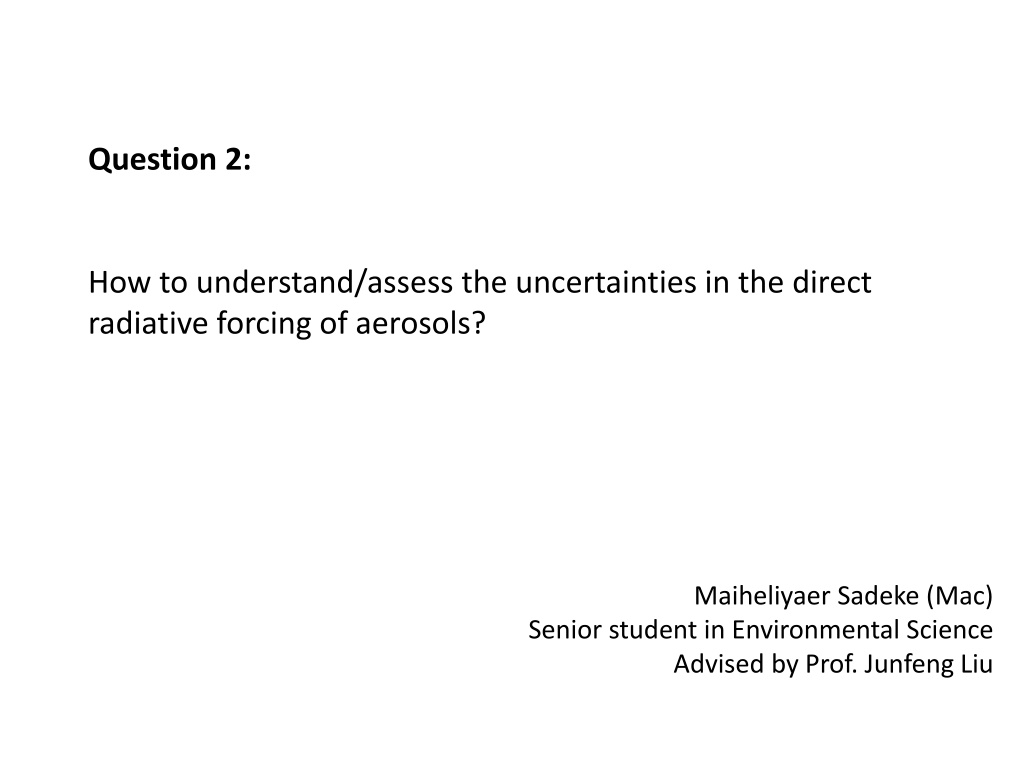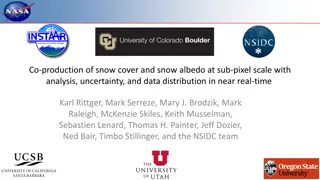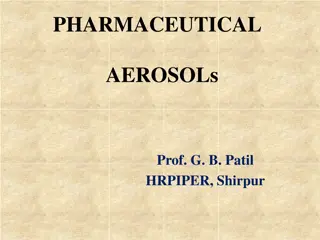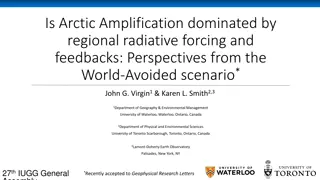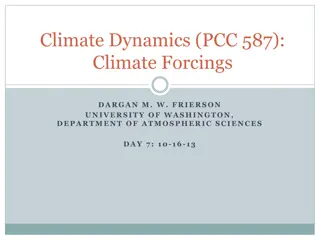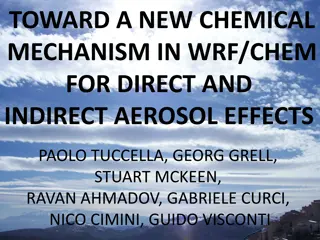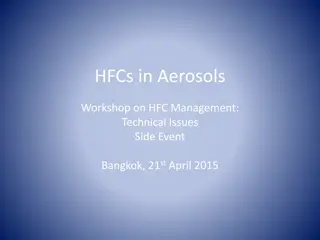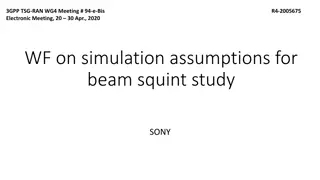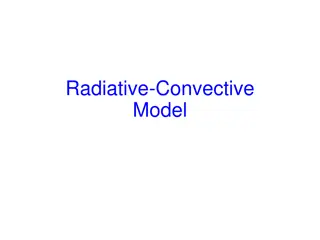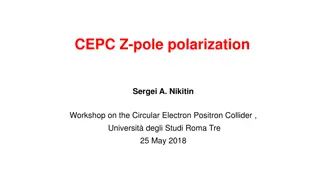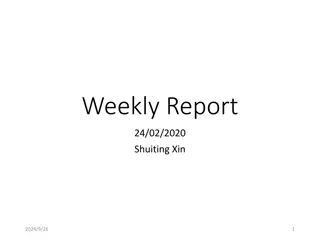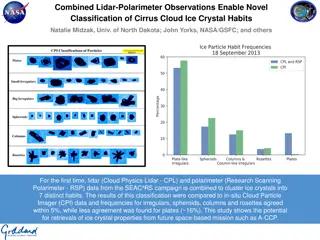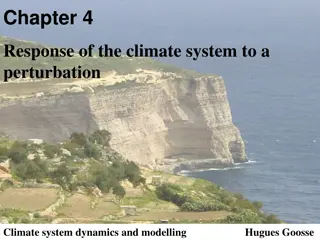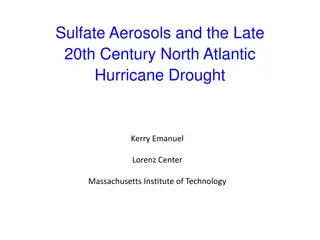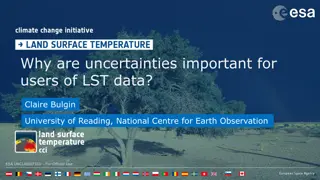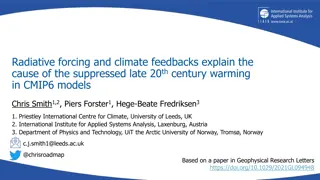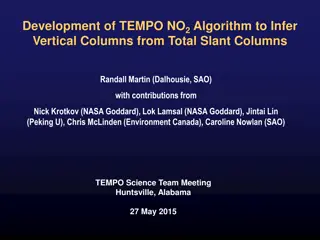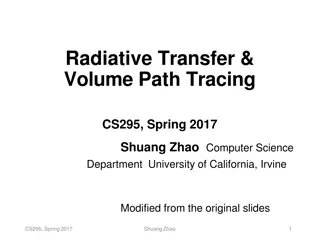Understanding Uncertainties in Direct Radiative Forcing of Aerosols
The uncertainties in the direct radiative forcing of aerosols can be assessed by considering factors such as emissions, lifetime, Mass Absorption Cross Section (MAC), Aerosol Absorption Optical Depth (AAOD), and forcing efficiency. Variations in these factors contribute to the overall uncertainty in the radiative forcing of aerosols. Bond et al. (2013) reported a 90% uncertainty range of +0.08 to +1.27 W/m2 with a central estimate of +0.71 W/m2 for black carbon (BC) direct radiative forcing. Uncertainties in AAOD and Aerosol Forcing Efficiency (AFE) are key contributors to the overall uncertainty. Methods like top-down observations and bottom-up estimations are used to constrain and evaluate these uncertainties.
Download Presentation

Please find below an Image/Link to download the presentation.
The content on the website is provided AS IS for your information and personal use only. It may not be sold, licensed, or shared on other websites without obtaining consent from the author. Download presentation by click this link. If you encounter any issues during the download, it is possible that the publisher has removed the file from their server.
E N D
Presentation Transcript
Question 2: How to understand/assess the uncertainties in the direct radiative forcing of aerosols? Maiheliyaer Sadeke (Mac) Senior student in Environmental Science Advised by Prof. Junfeng Liu
Introduction Can be constrained by measurements Uncertainty in BC DRF can be attributed to variations in four factors: Emission: 6000-18000 Gg/yr Lifetime: 3.8-11.4 days MAC: 4.4-13.4 m2/g AFE: 90-270 W/m2 per AAOD T.C. Bond et al. 2013
Emission, Lifetime, and Burden Impact of emission rate on RF varies regionally and globally. Representation of scavenging affects the magnitude and seasonality of BC concentration.(Internal mix & External mix) In most models, simulated surface BC concentration is weak over- predicted in Europe, under predicted in biomass burning regions, and large under predicted for eastern and southern Asia. [Bond et al. 2013] Vertical profiles of BC show that simulated concentrations have large biases in the free troposphere. [B.H. Samset et al. 2012]
Mass Absorption Cross Section (MAC) AAOD provoked per gram of burden, absorbing ability of pollutant. MAC depends on refractive index, water content, particle size, and mixing state. Mixing state: mixing with other aerosol components increases MAC, leading to an increase in absorption and positive forcing. [Haywood and Shine 1995] Chung and Seinfeld [2002] found a forcing increase of 36% for BC with homogeneous internal mixing compared with external mixing.
AAOD observation vs. simulation: AAOD is the product of emission, lifetime and MAC, and it can be scaled to observations to reduce uncertainty. Top-down method. AAOD constraining brings bias: BC AAOD was got from total AAOD subtracting dust AAOD(high bias).
Forcing Efficiency: Radiation perturbation caused by one unit of AAOD. Forcing efficiency depends highly on environmental variables, especially the reflectivity of the underlying surface. Vertical location of BC: AFE is enhanced when BC is over clouds. The model with lowest AFE has 14% of BC above 5km, while the highest has 37%. [Textor et al. 2006] Horizontal distribution of BC.
Summary: Bond et al.[2013] have the final estimate of 90% uncertainty range of +0.08 to +1.27 W/m2 with central estimate of +0.71 W/m2 (BC DRF). Uncertainty comes from uncertainties in AAOD and 50% uncertainty in AFE. 1. 2. 3. 4. Bottom-up method Emission Lifetime AAOD AFE 1. Top-down method Observation
